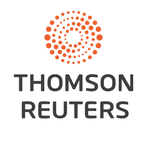U.S. Services Sector Surges: A Bright Spot Amid Economic Uncertainty
November 6, 2024, 3:36 am

Location: United States, Illinois, Chicago
Employees: 10001+
Founded date: 1916
Total raised: $25.01B
The U.S. services sector is experiencing a remarkable resurgence, reaching heights not seen in over two years. This surge, reflected in the latest Purchasing Managers' Index (PMI) data, signals a robust economic landscape as the nation gears up for a pivotal presidential election. The Institute for Supply Management (ISM) reported that the non-manufacturing PMI rose to 56.0 in October, up from 54.9 in September. This increase suggests that the services sector, which constitutes more than two-thirds of the U.S. economy, is not just surviving but thriving.
The recent data paints a picture of resilience. Employment within the services sector rebounded sharply, with the employment index climbing to 53.0, the highest level since September 2023. This uptick contradicts the Labor Department's report, which indicated a mere 12,000 job additions in October. Many economists believe that this discrepancy is due to temporary disruptions, such as hurricanes and strikes affecting major industries like aerospace.
The services sector's strength is crucial as Americans prepare to vote between Democratic Vice President Kamala Harris and former Republican President Donald Trump. Economic conditions often sway voter sentiment, and the current data could play a significant role in shaping opinions. Despite lingering inflation concerns, the overall economic indicators suggest a steady recovery.
The ISM's report highlighted growth across various industries, including retail, transportation, and construction. Respondents noted a booming business environment, with many expressing optimism about future prospects. Comments like "business is booming" and "commodity pricing is stabilizing" reflect a sense of confidence among service providers.
However, not all sectors are basking in this glow. Some areas, particularly healthcare and social assistance, reported challenges due to Hurricane Helene's impact on infrastructure. This serves as a reminder that while the broader economy shows promise, localized disruptions can still create hurdles.
The trade deficit also presents a mixed bag. It widened significantly in September, reaching $84.4 billion, a 19.2% increase. This surge in the trade gap is attributed to strong domestic demand, which has led to record-high imports. Businesses are preemptively stocking up on goods, anticipating potential tariff increases if Trump wins the election. His proposed tariffs could reshape the trade landscape, adding another layer of uncertainty.
Despite the trade deficit's expansion, the overall economic growth remains robust. The U.S. economy grew at an annualized rate of 2.8% in the third quarter, bolstered by strong consumer spending. The Federal Reserve is expected to cut interest rates again, aiming to stimulate further growth. This move follows a half-percentage-point reduction in September, marking a shift in monetary policy after a series of aggressive rate hikes in previous years.
The PMI data indicates that the services sector is not just a minor player; it is the backbone of the U.S. economy. A PMI reading above 50 signifies growth, and the current figures suggest that the economy is expanding. The services sector's performance is critical, especially as it encompasses a wide range of industries that directly impact consumers' daily lives.
The new orders index, while slightly down to 57.4 from 59.4, still reflects strong demand. This is crucial for sustaining growth in the coming months. The prices paid index also eased, indicating that inflationary pressures may be stabilizing, which could provide relief to consumers and businesses alike.
As the election approaches, the economic narrative will likely dominate discussions. Voters are acutely aware of their financial situations, and the candidates' stances on economic issues will be pivotal. The juxtaposition of a strong services sector against a backdrop of rising trade deficits and inflation concerns creates a complex economic landscape.
In conclusion, the U.S. services sector's recent performance offers a glimmer of hope amid uncertainty. The data suggests that the economy is resilient, with strong employment growth and robust consumer demand. However, challenges remain, particularly with the looming election and potential trade policy shifts. As Americans head to the polls, the state of the economy will undoubtedly influence their choices, making this a critical moment for the nation. The services sector's surge is a testament to the underlying strength of the economy, but vigilance is necessary as the landscape continues to evolve.
The recent data paints a picture of resilience. Employment within the services sector rebounded sharply, with the employment index climbing to 53.0, the highest level since September 2023. This uptick contradicts the Labor Department's report, which indicated a mere 12,000 job additions in October. Many economists believe that this discrepancy is due to temporary disruptions, such as hurricanes and strikes affecting major industries like aerospace.
The services sector's strength is crucial as Americans prepare to vote between Democratic Vice President Kamala Harris and former Republican President Donald Trump. Economic conditions often sway voter sentiment, and the current data could play a significant role in shaping opinions. Despite lingering inflation concerns, the overall economic indicators suggest a steady recovery.
The ISM's report highlighted growth across various industries, including retail, transportation, and construction. Respondents noted a booming business environment, with many expressing optimism about future prospects. Comments like "business is booming" and "commodity pricing is stabilizing" reflect a sense of confidence among service providers.
However, not all sectors are basking in this glow. Some areas, particularly healthcare and social assistance, reported challenges due to Hurricane Helene's impact on infrastructure. This serves as a reminder that while the broader economy shows promise, localized disruptions can still create hurdles.
The trade deficit also presents a mixed bag. It widened significantly in September, reaching $84.4 billion, a 19.2% increase. This surge in the trade gap is attributed to strong domestic demand, which has led to record-high imports. Businesses are preemptively stocking up on goods, anticipating potential tariff increases if Trump wins the election. His proposed tariffs could reshape the trade landscape, adding another layer of uncertainty.
Despite the trade deficit's expansion, the overall economic growth remains robust. The U.S. economy grew at an annualized rate of 2.8% in the third quarter, bolstered by strong consumer spending. The Federal Reserve is expected to cut interest rates again, aiming to stimulate further growth. This move follows a half-percentage-point reduction in September, marking a shift in monetary policy after a series of aggressive rate hikes in previous years.
The PMI data indicates that the services sector is not just a minor player; it is the backbone of the U.S. economy. A PMI reading above 50 signifies growth, and the current figures suggest that the economy is expanding. The services sector's performance is critical, especially as it encompasses a wide range of industries that directly impact consumers' daily lives.
The new orders index, while slightly down to 57.4 from 59.4, still reflects strong demand. This is crucial for sustaining growth in the coming months. The prices paid index also eased, indicating that inflationary pressures may be stabilizing, which could provide relief to consumers and businesses alike.
As the election approaches, the economic narrative will likely dominate discussions. Voters are acutely aware of their financial situations, and the candidates' stances on economic issues will be pivotal. The juxtaposition of a strong services sector against a backdrop of rising trade deficits and inflation concerns creates a complex economic landscape.
In conclusion, the U.S. services sector's recent performance offers a glimmer of hope amid uncertainty. The data suggests that the economy is resilient, with strong employment growth and robust consumer demand. However, challenges remain, particularly with the looming election and potential trade policy shifts. As Americans head to the polls, the state of the economy will undoubtedly influence their choices, making this a critical moment for the nation. The services sector's surge is a testament to the underlying strength of the economy, but vigilance is necessary as the landscape continues to evolve.
